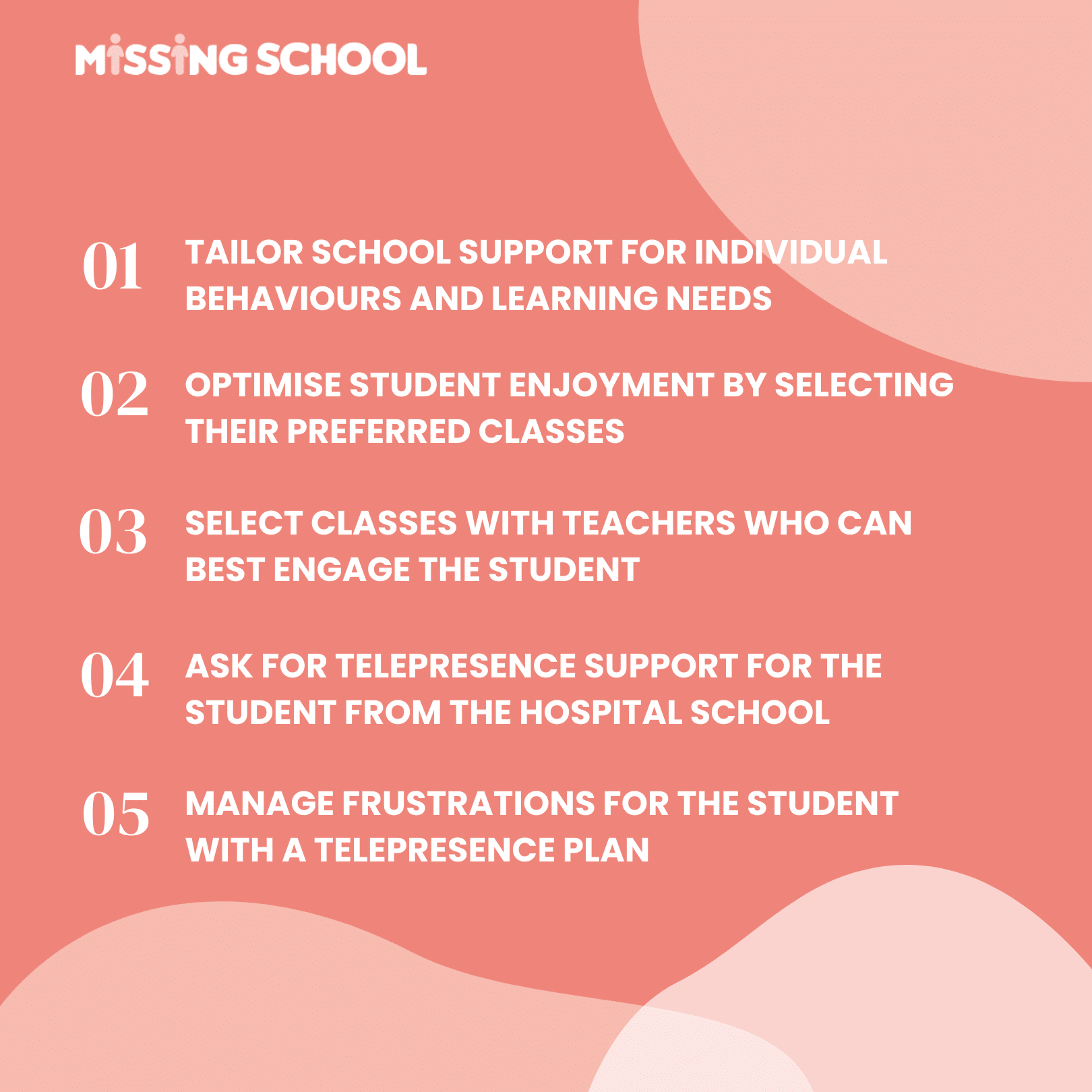Happy Autism Awareness Month! We are delighted to celebrate and raise awareness, acceptance, and inclusion for students with autism every day – not just the days which make headlines. Over the years, we’ve supported hundreds of kids to stay connected to their schools; many also have an autism diagnosis (Autism Spectrum Disorder – ASD).
The combination of serious illness and autism can make maintaining a connection to school particularly difficult for some students. However, with the right support and resources they can thrive academically and socially. One of the most important tools to support autistic students with chronic illness is through individual education plans (IEPs). IEPs outline specific goals and accommodations that can help these students succeed in the classroom – and each should be tailored to reflect a student’s specific needs.

Telepresence technology can be a valuable tool for supporting students with ASD. Especially in cases where a student with autism has difficulty communicating, telepresence robots can be a useful half-way point between isolation at home, and a classroom environment which may be overwhelming. They can provide the tools to focus especially on areas where students are excited to engage, and help liaise between the student and school to build relationships with known teachers.
In recognition of Autism Awareness Month, MissingSchool has composed five recommendations for teachers, parents, and carers to support students with autism and serious illness in their school journey.
While these recommendations are drawn from our data on students and schools using telepresence robots, many of the points can be applied to the use of other telepresence technologies such as Zoom or Teams.
1. Tailor school support for individual behaviours and learning needs
These might include audio considerations, thinking through the best placement of the technology in the classroom, providing multiple forms of technology/materials like visual resources to accompany learning, giving video links to support classroom activities, considering student preference for mobility/independent movement (e.g. through a robot) or just being stationary, and reminding the student they can mute their video and/or audio to suit their needs.
2. Optimise student enjoyment by selecting their preferred classes
Many, though not all, autistic students have special interests or areas in which they are far more excited to study. Focusing on these areas first can sometimes lead to increased engagement in other areas as well. Make sure time for play and social connection such as dialling in during recess or lunch to chat with friends is included in the student’s plan.
3. Select classes with teachers who can best engage the student
If a student is struggling to engage through the technology, try a few short 1:1 teaching sessions with their preferred teacher or learning support staff to build rapport and experience with the technology. This can help the student feel more comfortable with whole class engagement and is also a good approach for debrief/check-in sessions. It’s helpful for teachers to model positive social engagement and how to communicate with the absent student via the technology so classmates understand how to include their absent peer. Dialling in before class starts can give the student with ASD time to “warm up” before class. Dialling in for regular, specific activities in the daily class routine such as news or reading time can be a helpful approach for some students, where possible.
4. Ask for telepresence support for the student from the hospital school
Depending on the student’s needs, and their relationship with hospital school staff (if a hospital school is involved), it can be helpful to have hospital school teachers support the student to connect to their regular school through technology. We suggest the hospital school be included in the student’s plan for connection when relevant. Contemporary research has consistently found that student outcomes are best served when hospital, education, and student support networks work in concert.
5. Manage frustrations for the student with a telepresence plan
We know that technology doesn’t always work perfectly! It can be helpful to consider the following questions in advance, and to talk them through with the student: What will you do if you feel frustrated? What will you do if you get overwhelmed with noise/sensations? What if you can’t hear, or miss an instruction? What if you need to ask a question? Having a plan to support and manage these issues can make a huge difference to improving the student’s experience and outcomes in the long term.
Finally, and most importantly, it is worth remembering that every autistic student is different, and their needs are highly diverse. Our recommendations, like any plan for school connection, should be tailored to take into account the specific attributes and considerations of the student and their situation.
In closing, we want to acknowledge that this work is only made possible by your continued engagement, support, and commitment to a world in which all students are seen and heard.
Thank you for reading, and let’s continue to work together to support all students in their educational journeys.
There are many ways to help:
- follow along and cheer us on Facebook, Instagram, and LinkedIn
- share this newsletter with your family, friends, or colleagues so we can reach more sick kids, and
- donate towards getting a seriously sick child back into their classroom.
Every action moves us closer to the finish line: a world where every sick child is seen and heard.
Let’s keep connecting.
